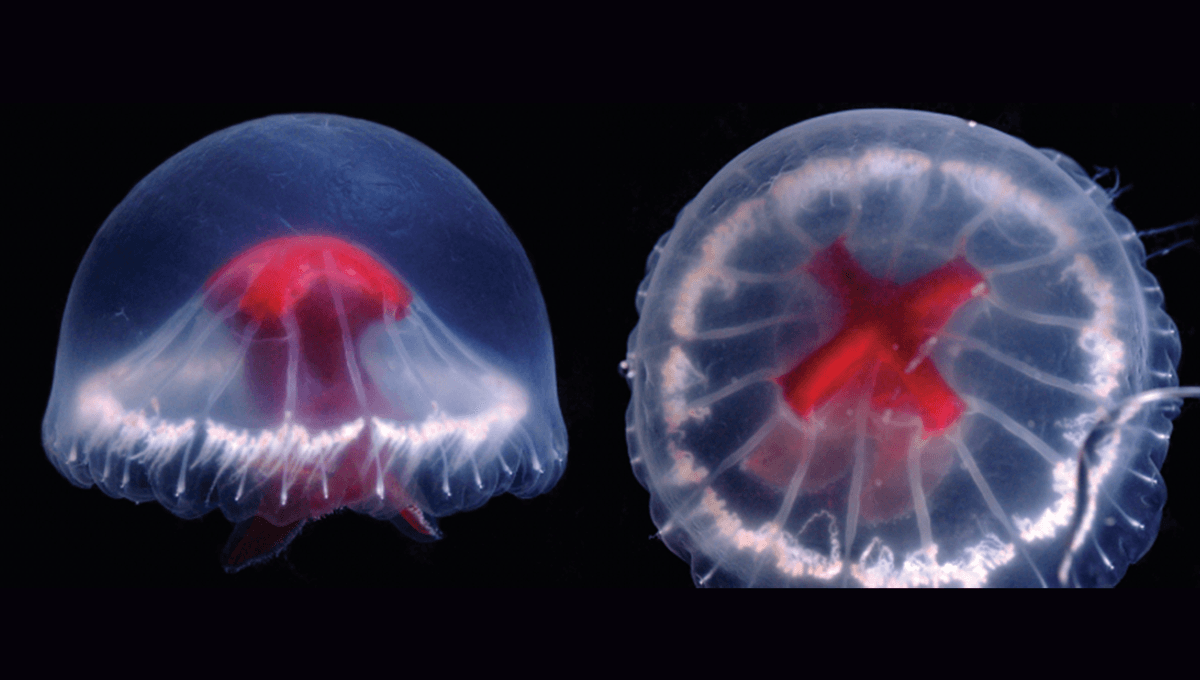
New species are discovered all the time – and while some fit nicely into previously created taxonomic families, others are so funky that they get a whole new naming system created just for them. Introducing the St George’s Cross Medusa (Santjordia pagesi) a brand new medusa jellyfish species from deep waters off the coast of Japan.
This new species was seen and then captured at 812 meters (2,664 feet) deep in the Sumisu Caldera off the coast of the Ogasawara Islands, roughly 460 kilometers (285.8 miles) south of Tokyo in Japan.
Normally, species descriptions are made from several individuals, but this new species was named from a single specimen that was captured from a Remotely Operated Vehicle (ROV) called Hyper-Dolphin in 2002. More individuals were also observed, but not until 2020, when another ROV filmed (but did not collect) an individual of the same species. The Caldera is a hydrothermal deep-sea volcano structure that has a diameter of about 10 kilometers (6.2 miles), and the researchers suspect further dives would reveal more of this new rare species.
The St George’s Cross Medusa has been given this name because of the bright red cross – actually the medusa’s stomach – that is similar to the St George’s Cross on the flag of England, which can be seen when the medusa is looked at from above.
“The species is very different from all the deep-sea medusae discovered to date. It’s relatively small, whereas others in this kind of environment are much larger. The bright red coloring of its stomach probably has to do with capturing food,” Said André Morandini, last author of the paper and professor of zoology at the University of São Paulo’s Institute of Biosciences (IB-USP) and Director of the Center for Marine Biology (CEBIMar), in a statement.
The team thinks that the bright red color of the stomach helps to disguise the jellyfish’s food from predators. Much of their diet is bioluminescent organisms that glow in the deep dark waters – having a red tummy deadens the glow, protecting the jellyfish after it has consumed its meal.
The medusa has been given both a new name and a new subfamily with which to belong, named Santjordiinae. This new jelly has small sensory structures called “rhopalia” on both the edge and the underneath of its umbrella making it unique within the order Semaeostomeae to which more commonly known species like the moon jellyfish belong. The team suggests that the new species might fit within the Semaeostomeae when more sampling has been carried out on different species, but for now, it is placed in the broader jellyfish family Ulmaridae.
The team also thinks that because the new species is quite different from all other species previously found, it could also hold a new selection of venoms that could be quite different from those previously studied.
“Who knows? Maybe it holds secrets more valuable than all the mineral wealth that could be extracted from that place. All this with the advantage of keeping the species and the site intact,” Morandini said.
The paper is published in the journal Zootaxa.
Source Link: New Jellyfish Species Rocking A Bright Red Cross Identified In Japan